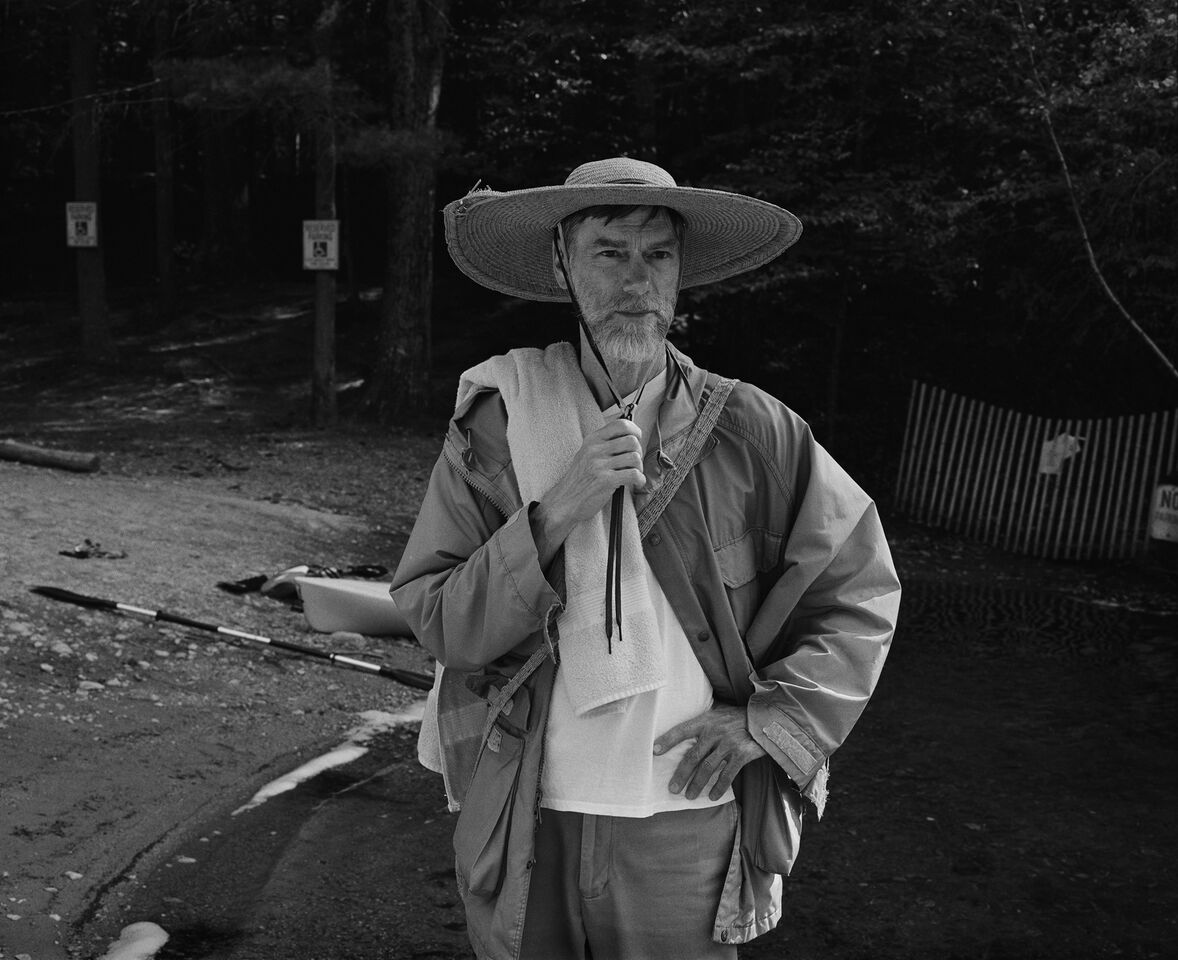When you remove Walden Pond from the context of Henry David Thoreau, you might be surprised to find that it’s just a beach—a glacial kettle-hole pond anchored on a stretch of wooded state reservation land in Concord, Massachusetts.
“It’s the kind of place where on a hot July day, the traffic has backed up, the parking lot is full, it’s not unlike going to other places for a swim,” says S.B. Walker, whose photographic survey of Walden is now on view at the Janet Borden, Inc gallery in Dumbo, in concurrence with the release of his book, published by Kehrer Verlag, in May.
Walker’s book appears in print 200 years after Thoreau was born. Also titled Walden, claiming the same name that Thoreau did was something the photographer says he wrestled with for a long time. “Walden— it’s such a symbolically charged place,” says Walker. “As soon as anybody reads that name there’s a wide range of associations.”
He went through multiple titles before deciding this was the only title he could use. “At some level, I just couldn’t name it anything else,” says Walker.
The up-and-coming photographer grew up in Lincoln, just a few miles from the New England pond known the world over. But despite his physical proximity to the place that Thoreau immortalized, Walden; or Life in the Woods didn’t hold any special meaning to Walker at first. Of all Thoreau’s works, the text he first gravitated to was Civil Disobedience. But slowly, he found his way back to Walden, in part thanks to a Thoreau essay, “Wild Apples,” which a mentor recommended he read after seeing his black-and-white photographs of apple trees.
Later, while studying abroad in Greece, he happened across a copy of Walden. Feeling the tug of homesickness, he revisited the story, and realized Thoreau was writing about the places that he himself knew intimately.
When Walker returned to the states, he began recreating Thoreau’s long, winding walks that skirted his own hometown. Eventually on those trips, he started bringing his camera along.
“When you start a project like that you really don’t whether it’s going to take off or not. It sort of takes getting that first picture,” he says.
The right snap turned out to be a shot of a regular at Walden—a middle-aged man with a salt-and-pepper beard standing by the handicapped parking spot signs. He wears a wide-brimmed straw hat and has a towel slung over his shoulder. In the black-and-white photograph, he stares almost directly at the camera.
“I really wanted to work with what is the idea of Walden,” says Walker. “There’s this kind of push to run more with the myth of what a place is, to the point where it really obscures the truth.”
The photographer was in his late 20s when he embarked on his project to document the state of Walden today, just around the age Thoreau was when he first came to “live with intention” there, on the plot of land that Ralph Waldo Emerson owned.
While he worked, Walker studied Thoreau’s journals, which helped him get a feel for the philosopher’s thought process. “Whenever you’re walking around the pond, you’re looking at things that are happening, and you’re thinking, ‘What would Thoreau make of this?’,” he says.
The question is deftly imprinted in the uncluttered scenes of Walker’s photo series, and it’s disconcerting at first to see Walden through Walker’s lens. A shot of young girls clumsily preening by the bathroom stalls or a family making a day of it with their towels laid out, with snacks and a sand castle mold resting nearby, feels hard to reconcile with the pond that the young transcendentalist wrote about. One shot that captures a woman lounging in the water, her eyes on her smartphone, feels particularly jolting.

What would Thoreau, the social critic, make of all this? The answer isn’t necessarily so simple. Walker’s photographs also play with the very idea that the woods of Walden Pond were never the untouched wildernesses that the inspirational Thoreau posters that hang on grade school classroom walls might imply.
Thoreau was no hermit in seclusion during his time in Walden. He lived close to town, and even dedicates a chapter in his book to “Visitors.” During his lifetime, America was also rapidly industrializing and Walden reflects that contradiction, like when Thoreau includes the sounds from the railroad that ran less than a mile from his cabin.
Walker’s images reflect that more nuanced landscape of Walden, showing how people have impacted its terrain throughout history. He captures the human alteration of Walden in the abandoned ice cream cone left to melt on the pavement, not to mention the Caterpillar tractor clearing a nearby tract of land for development. (Thoreau, who is now seen as a proto-environmentalist, also collected data while living by Walden that modern climate scientists have used to show that Walden’s ice breaks up two weeks earlier in the present-day.)

Walker spent several years working on the project, and Thoreau’s words resonated with him to the point where he actually went out and built a little cabin himself on land his grandmother owned in southern Maine in 2012. He wanted to see if Thoreau had a point, whether there was really something to living on the land or whether it was just performance art.
So far, he hasn’t been able to come to a conclusion one way or the other. “I’m still wrestling with it,” he says.
